Our return to the Trent Severn and initial travel up the Peterborough Lift Lock was uneventful. This year it was executed in bright sunshine, good for pictures and a thus a more enjoyable experience than last year.
This picture of our approach to the lift lock is also a good visual for the “blue line” that I have mentioned occasionally. In Canada, lock keepers do not use radios. Instead, when you are ready to go through the lock, you move and tie up to the blue line that is painted on one or both sides of the lock wall. The lock attendants see you and will then prepare the lock for you to transit.
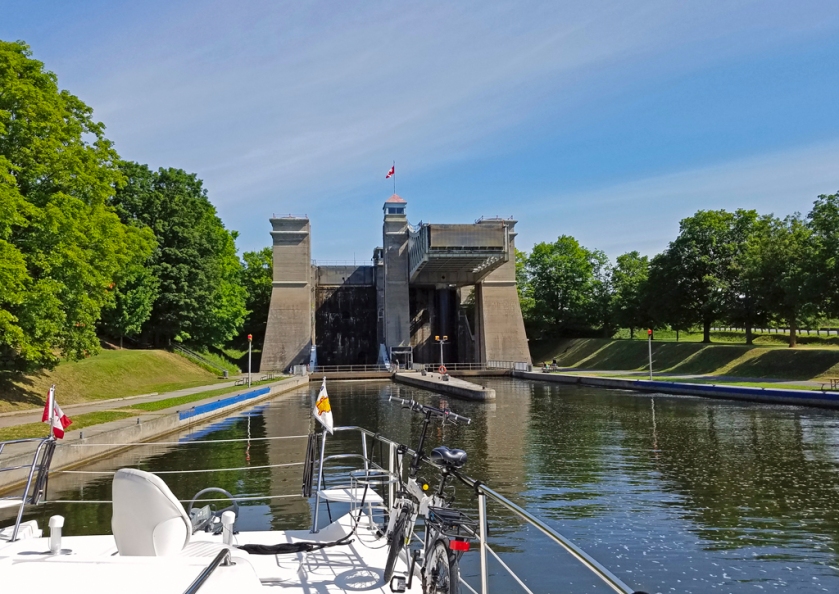
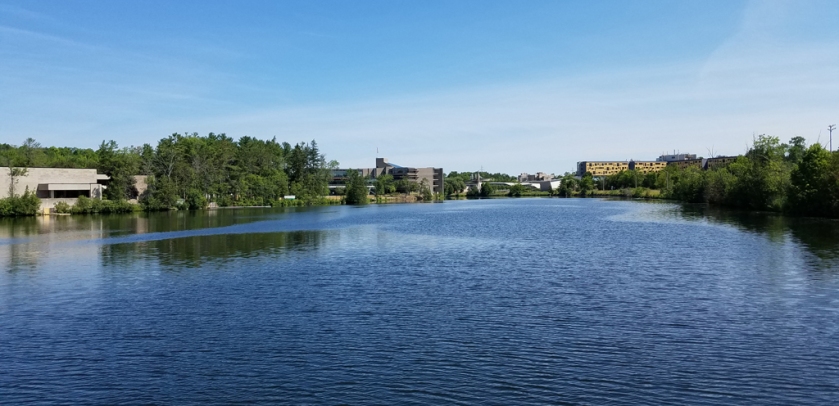
Our first stop was Lakefield, home of Cassis Bistro and The Chocolate Rabbit. No problem finding a suitable tie up along the lock wall, and we headed into town, looking forward to buying what we consider the best chocolate we have ever eaten. All offerings are made daily in house, using the best Lindt chocolate from Switzerland. Their beautiful and delicious liqueur chocolates are the best, colourfully decorated and filled with a creamy (and alcoholic) filling that is such an improvement over the more traditional hard coating over a liquid centre. We made the owner (who remembered us from our two visits last year) laugh as we failed to agree on how many of the amazing treats we were going to need to carry us forward on our summer voyage. Two boxes later, and a brief stop for more mundane groceries, we were able to return to the boat with our loot. A double-check confirmed our fears for dinner plans. The Bistro, which seems to be exactly our kind of place, has now been closed for all 3 of our 3 visits to the town.
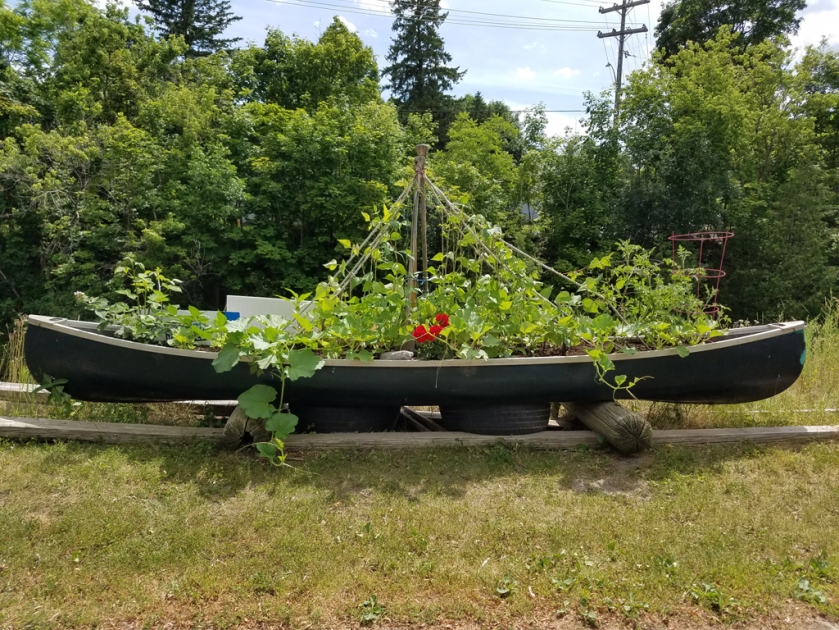
Just as important as fuel and fresh water, pump outs are part of our weekly routine and need to be planned, as not all marinas offer the service. Peterborough’s machine seems to be permanently broken, and the town fathers in their wisdom have decided they will neither repair nor replace the system. Instead a large truck appears at the dock by appointment. The dockmaster strongly recommended finding another solution, as the oversize hose and high suction on the truck has been known to collapse holding tanks on pleasure boats. I don’t even want to think about the consequences of that! Our next opportunity was to be Lakefield Marina. Dick phoned the night before, and was assured that their pump out was working and there would be space kept free on the fuel dock for us to come in the next morning. On arriving and making a radio call we were told, sorry, the dock is full, we can’t help you. We could see a number of large boats along the dock, but they were placed with large spaces between and could easily have been better positioned to leave the fuel and pump out facility free. Onward to Young’s Point, and a completely different experience. As soon as the dockhand saw that we were going to have trouble fitting into the gap, he asked the trawler beside the space if they would mind moving along to let us fit in. Not only did the captain move his boat, he also helped catch our lines. Happens it was a Looper, who we had met before, but I believe any boater would have obliged.
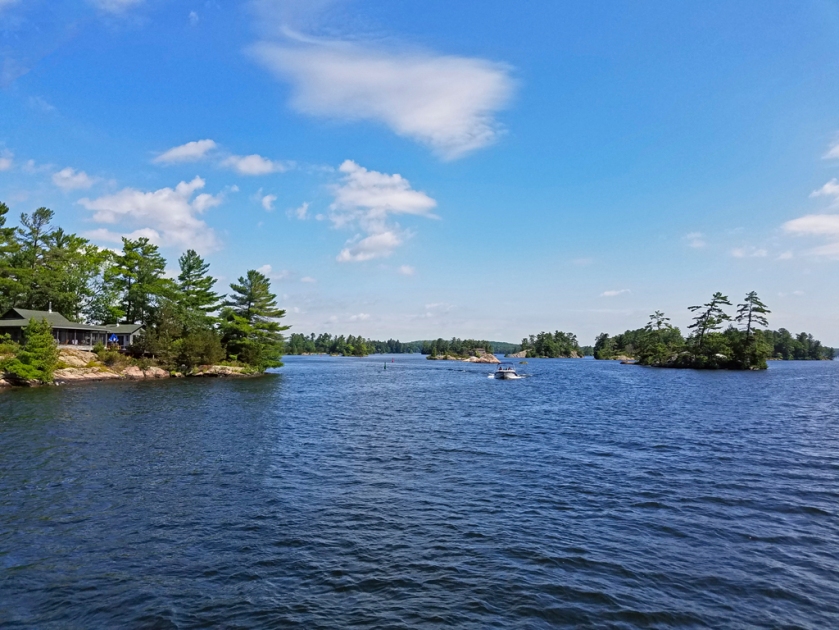
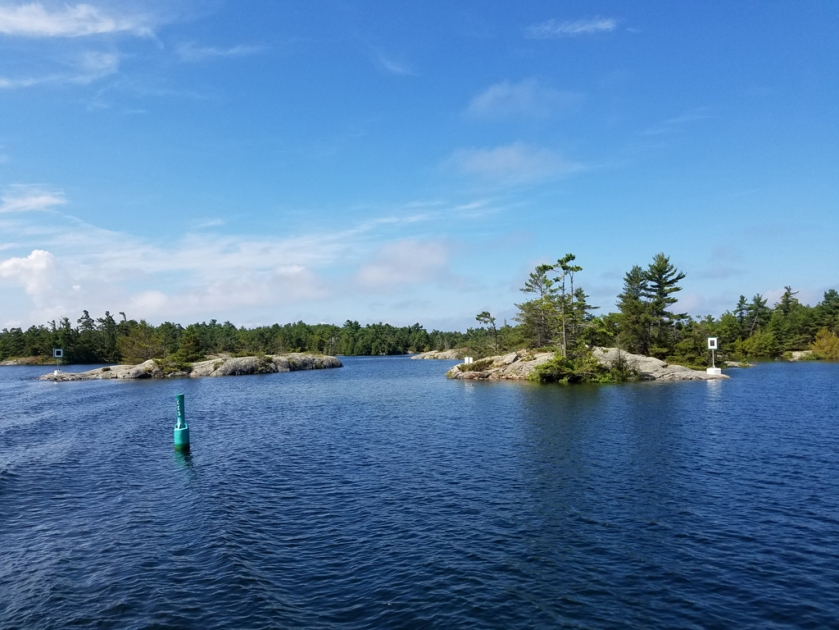
Our next stop was the lock wall above Burleigh Falls. It is a pretty spot, very popular with picnickers and boaters, but quiet as evening falls. Dick went walkabout and visited the falls that give the location its name. From Burleigh Falls to Bobcaygeon was a short run, but the spaces on the lower wall that have power were already filled, so we transited the lock and tied up on the upper wall and used the generator. Bobcaygeon is a bustling small town in the heart of Toronto’s cottage country. It is the location of the first lock to be built on the Trent Severn Waterway, in 1833, and yet the village was not incorporated until 1876. The history goes back quite a bit more, the site being visited by Samuel de Champlain in 1615. It was not until the early 1800’s that the area began to attract settlers. The lock, a sawmill, and a gristmill, followed by lumbering business, ensured further development of the village through the 19th century. The railway arrived with passenger service in 1904. Today the village serves as a hub for tourism and a location for services unavailable in the smaller communities around the Kawartha Lakes area.
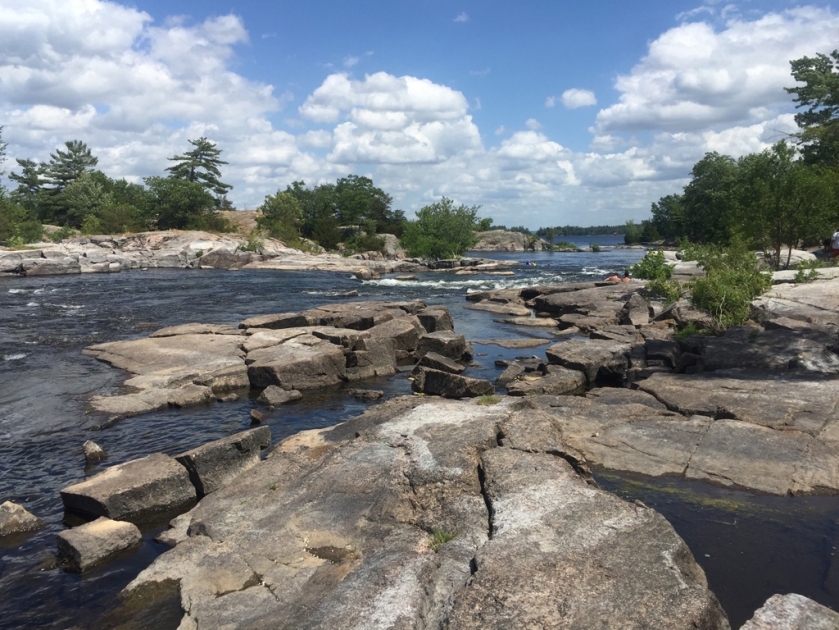
One more overnight was required before Lake Simcoe. Last year we stopped at the bottom of the second lift lock on the system, Kirkfield. It was a fascinating stop, and we had thought to stay there again this year. A look at the wind forecast for Lake Simcoe suggested travelling on further that day, so that the next morning we would be able to get off the shallow lake before the wind came up in the afternoon. Consulting our various sources suggested Lock 40 as the ideal stop, but on arrival at Lock 37 we were told Lock 40 was already full, both top and bottom. Instead we tied up above Lock 38, in a residential area that turned out to be just delightful. Cottages line the waterfront, with some natural area along the calm water of the small bay. One home with beautifully landscaped grounds features a distinctive red British telephone box. Close examination through binoculars reveals a life-size blow-up doll in a bikini making a phone call inside. A very British sense of humour!
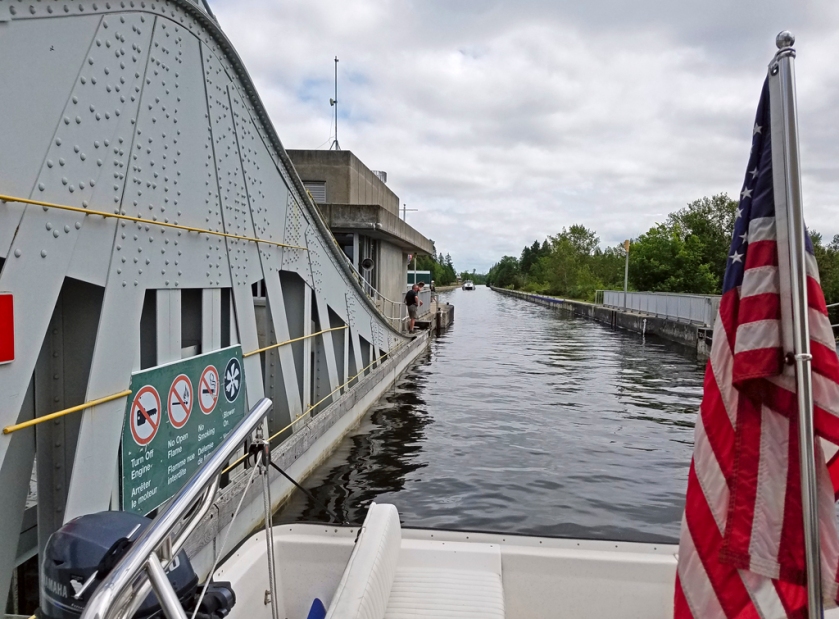
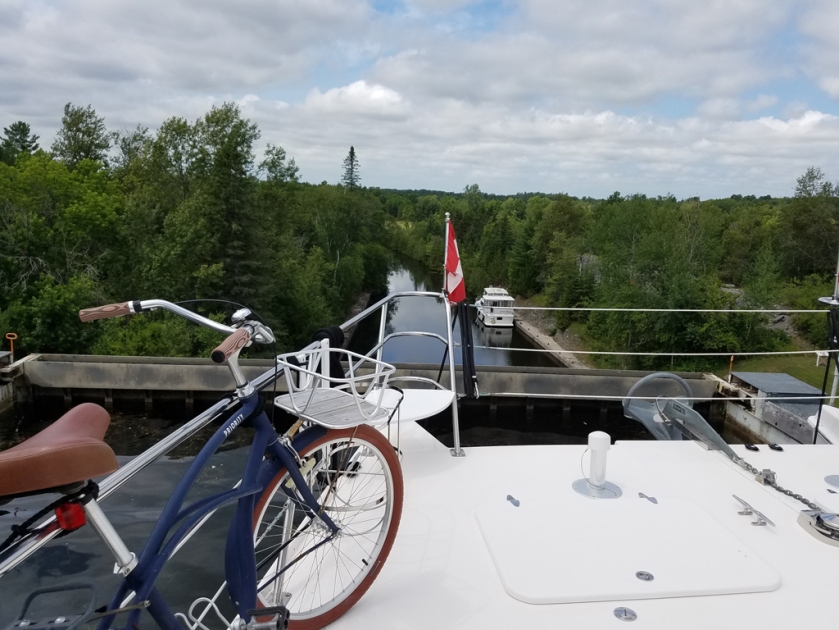
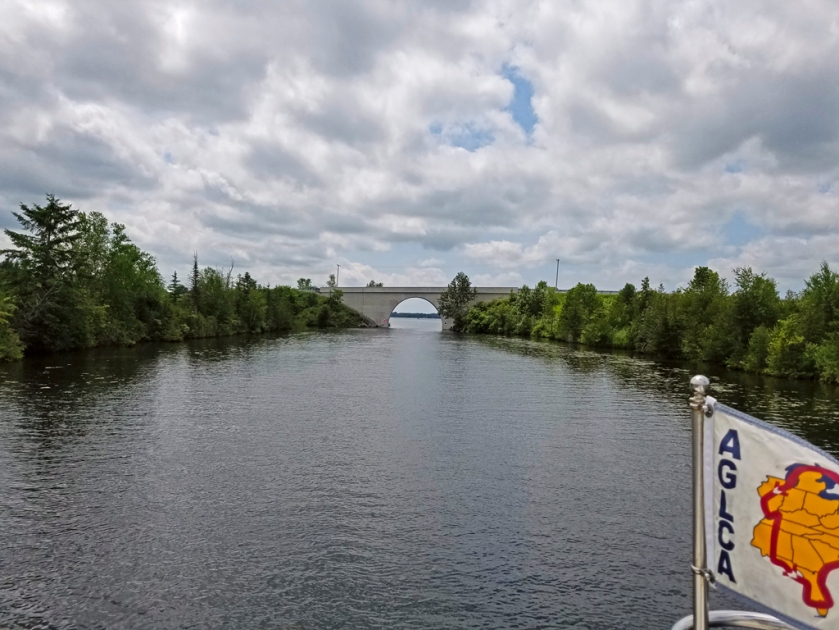

After setting off the next morning we could see that our various books and information were out of date, and there were further options to tie up closer to the lake and avoid having to transit 4 locks in the morning. However, none of the options were nearly as pretty as our stop, and all the alternates seemed to be home to more than a fair share of horseflies. Arriving in a timely manner at Lake Simcoe, but not liking the look of the dark cloud all around, we ran fast to Orillia and arrived just after noon.
Orillia has a very pleasant town marina, nearly as good as the one in Trenton, just lacking in a fuel and pump out facility. The marina is in the centre of town, so very convenient for shops and restaurants, including an excellent grocery store and the all-important liquor store. It is a popular stop for Loopers, especially those who have learned the lesson about weekends. What is that lesson you ask? STAY PUT. Weekends bring what seems like vast numbers of boaters who lack even the smallest sense of courtesy or consequences of their wakes. In fact, we can only conclude that all too many think it is “fun” to come as close as possible. If one is thinking the best, one assumes they are merely curious (as well as ignorant of the discomfort caused by their wakes), if one is not assuming innocence it does seem as though many of these boaters think bouncing and swaying of a wake is both fun and a desirable aspect of being on a boat.
There were at least 15 Looper boats in the marina in Orillia that weekend. Friday evening, 30 of us gathered for docktails in the welcome air conditioning of the marina building. This was the largest gathering of Loopers we have been part of since Norfolk last spring. Interesting snacks were produced and many boat cards exchanged along with stories and plans.
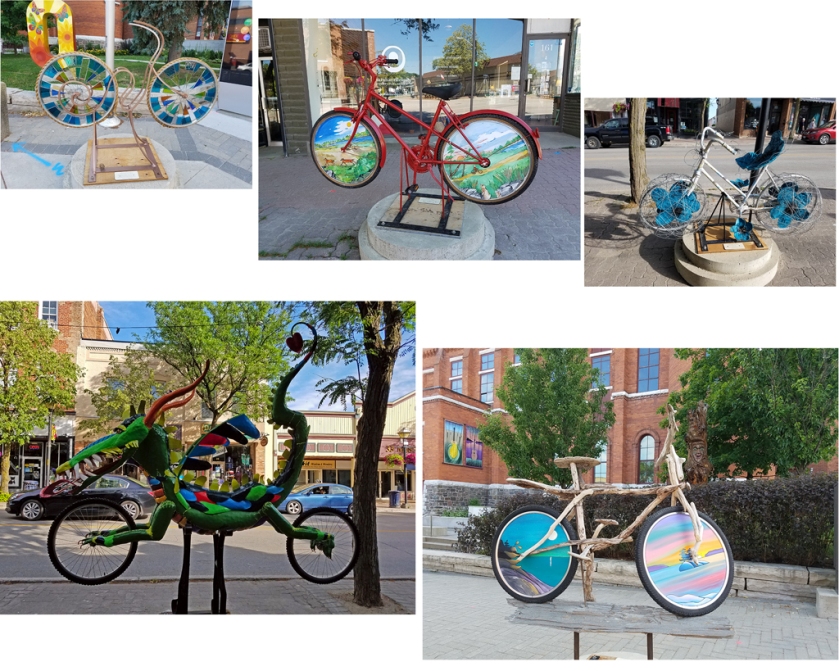

Saturday morning after a quick vacuum and clean-up we were ready to entertain visitors. Erika and Holger arrived first. We had corresponded with them on several occasions. They are also Endeavour 44 owners, and we were interested to hear that in fact they saw our Nine Lives some time before we did, when she was briefly for sale with a broker on Florida’s east coast. Holger told us that timing was not right for them to buy (lucky for us!) but from then on, all boats they saw were compared to our Nine Lives, unfavourably as it happened! (If you are wondering, we do not mention the previous boat name, having gone through the important de-naming and renaming ceremony one should not remind the gods of wind and waves that there was ever a different name). As Erika and Holger left, Martin and Louise arrived. They have been friends for many years. Dick worked with Martin even before we all moved to Calgary back in the dim and distant past of their careers. It was lovely to see them and have a chance to catch up. We will hope for more chances to get together now that Louise has also retired.
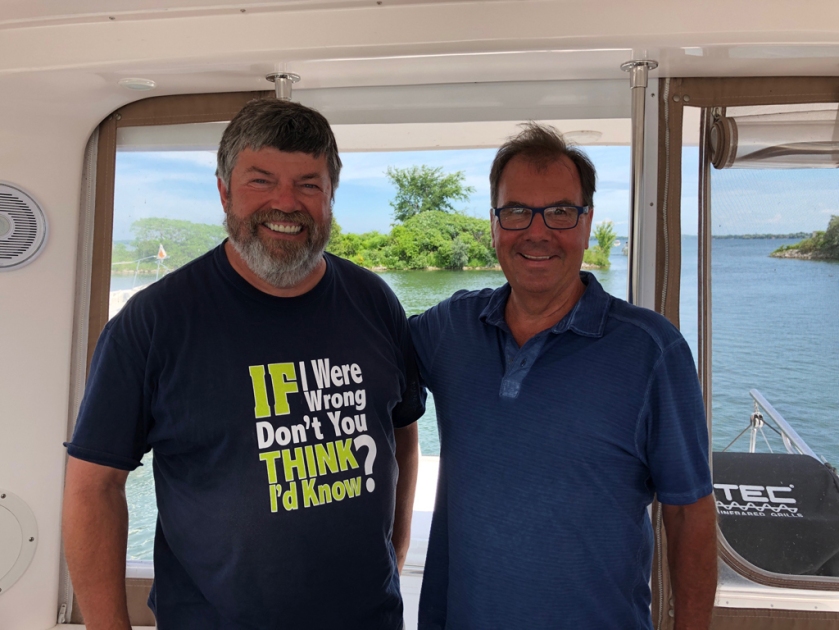
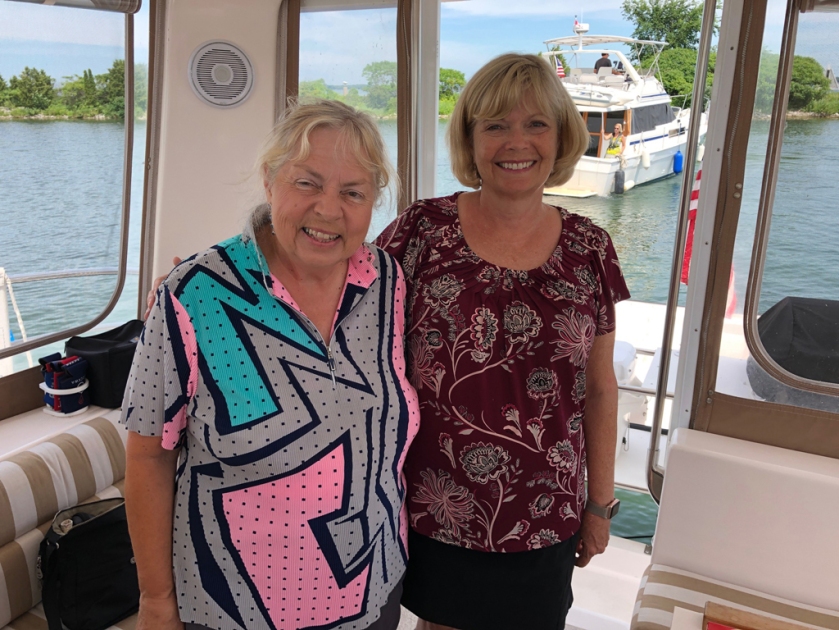
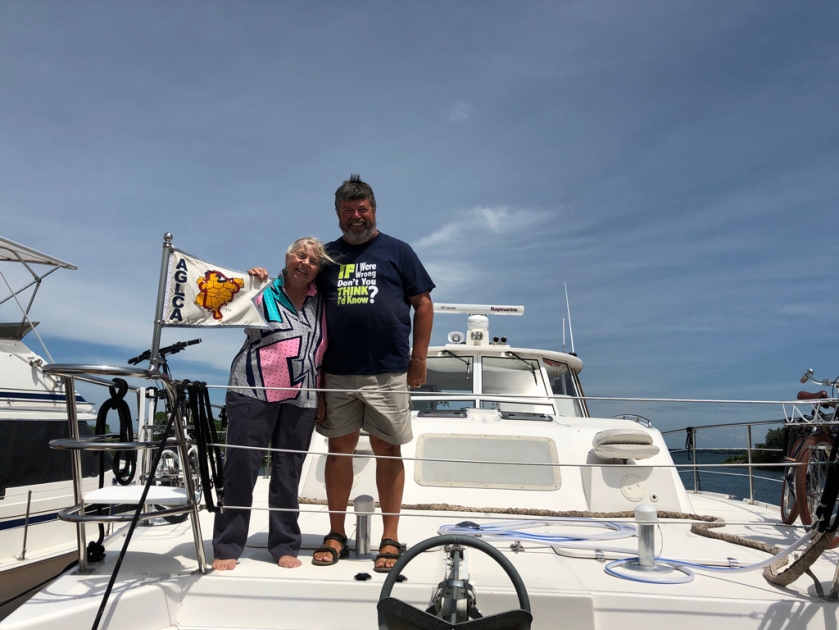
That evening, at cocktail hour, Dick decided to pour himself a Caesar (a refreshing long drink made from vodka and clamato juice, not dissimilar to a Bloody Mary). Several lip-smacking sips later, he chanced to examine the can of clamato juice, only to discover that it is actually a pre-mixed Caesar in a can, with the vodka already in it. Nobody would ever accuse Dick of preparing a weak adult beverage, so his libation had double or perhaps quadruple the normal ratio of alcohol to juice. No wonder it was so delicious! Later we walked (one of us with a bit of a roll in his step) to the nearby Thai restaurant with our new friends from Visions and Second Princess. Sadly, this was possibly our last get-together with them, as we are now past Second Princess’s final destination, and I have heard from Visions that they are many miles ahead of us on the voyage.
After a relaxing weekend in Orillia we left with a slight detour back to the boatyard at the south end of Lake Couchiching for a pump out. This is the boatyard where we came to grief last year due to a combination of strong current, winds, and too many small boats ignoring all the rules of the road. We slammed into the corner of their dock and punched a hole in one pontoon, fortunately well above the waterline (and beautifully and invisibly repaired this winter). The dockhands remembered us, and the incident! I was interested to observe (and why would I be surprised?) that girls do the best pump outs. There was great care taken at all stages, and zero spillage. Somehow it just isn’t in boy DNA to take such care!
After transiting Lake Couchiching we arrived at a railroad bridge that is just 6” too low for us to pass under when closed. It is known for being very busy, with long waits for boaters to pass through because of the amount of freight carried by that line. On arrival we were advised that the bridge was not working, and the attendant was waiting for someone to come out and look at it. He took my phone number and promised to call. That part of the river has a current and nowhere for us to tie up, so we backtracked into the lake and anchored along with 4 other Looper boats. The nice young man did call me, so I spread the word and we started to haul the anchor. It seemed as though half the weeds on Lake Couchiching had attached themselves to our chain and anchor, so we were well behind the other boats as we returned to the canal. I got another call from the attendant to ask how far out we were, and he was very sorry to tell me that he had trains coming and would be unlikely to be able to hold the bridge for us. When we got there, he had held it after all, which was very kind. The delay cost us more than two hours on what was going to be quite a long day, so we realized we would not get to our destination, Big Chute, that afternoon.
We stopped above the lock at Swift Rapids. There were quite a few other boats, so it was not exactly a peaceful stop, but the scenery was lovely and being on a lock wall meant that Dick was able to grill some of the steaks he had bought at the meat shop in Peterborough. He also took the opportunity to install the part for the generator that had been delivered to us in Orillia. More than a few sighs and occasional muttering later, the replacement hose was installed, and so far, the generator is running perfectly with no more leaking of coolant.
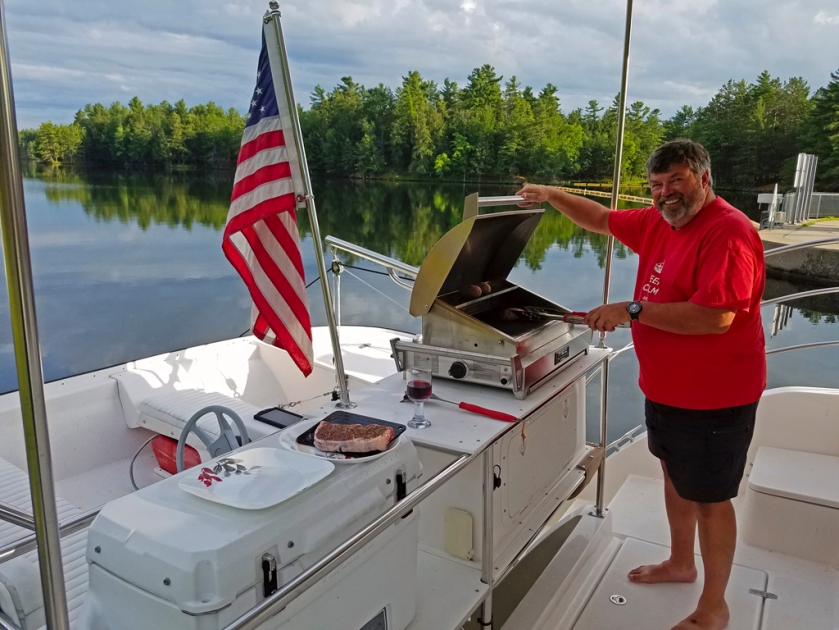
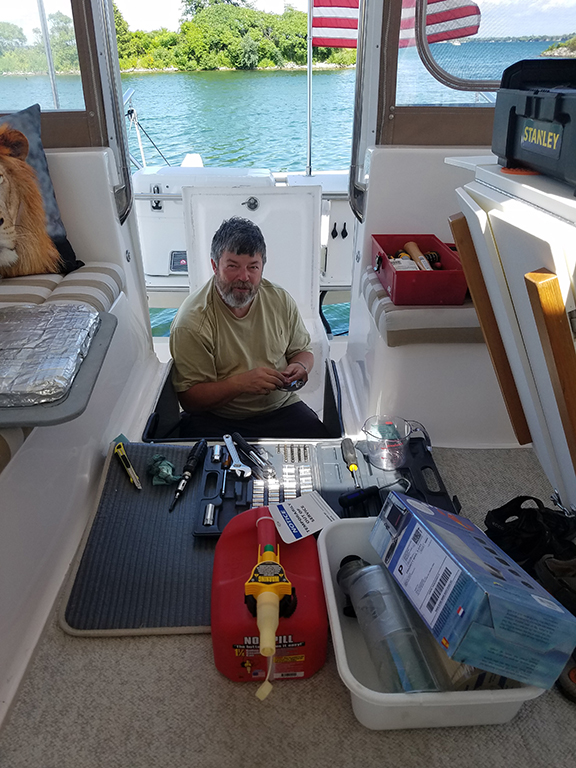
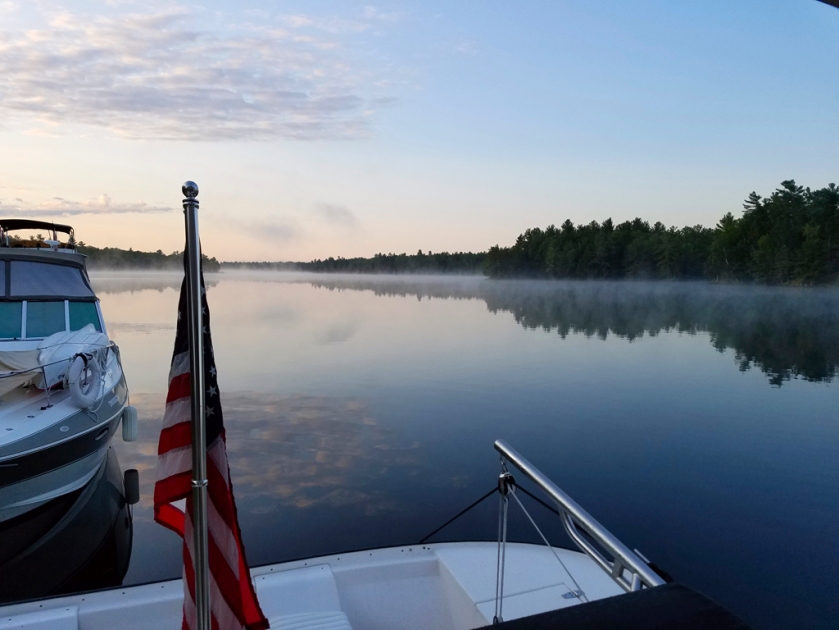
Swift Rapids is the highest of the conventional locks on the system, 47 feet. On arrival at the bottom we were glad we had stopped above where it was much prettier and with a cool breeze to keep away insects. From there it was a short drive to Big Chute. There were originally intended to be a flight of 3 locks to take boats from the Trent River down the escarpment into the Severn River, but a problem with sea lampreys in the Great Lakes required an alternative solution that would keep them from getting into the Trent River. A marine railway, or canal inclined plane, was proposed and built in 1919. It operated successfully until 1978, when a new, larger railway replaced the original.
This was our second transit of Big Chute, so we didn’t need to tie up and watch, and we knew we would not need the slings. There was nobody ahead of us, so we headed straight in after a very brief stop on the blue line. Big Chute is the only marine railway still operational in North America. It is basically an open railway carriage, 80 feet long by 26 feet wide, that drops into the water so that boats drive on, then the railway comes up out of the water and down the steep hill (a 60 foot drop) to the Severn River at the bottom. The carriage travels on a dual track, with the front and back of the car on different tracks that allow it to remain level. At the bottom, the carriage drives into the water until the boat is floating again, and the boat then simply drives away. Most larger boats require slings similar to the sort that are used to take them out of the water at a boatyard, but fortunately Nine Lives has fully protected props and rudder, allowing us to rest nicely on the bottom with no requirement to swing precariously in the slings. It is still something of a knuckle biting ride, as the carriage shakes and rattles and you try not to look to hard at the rust on the supports. Interesting thought it may be, we are glad to drive off at the bottom after a safe transit!
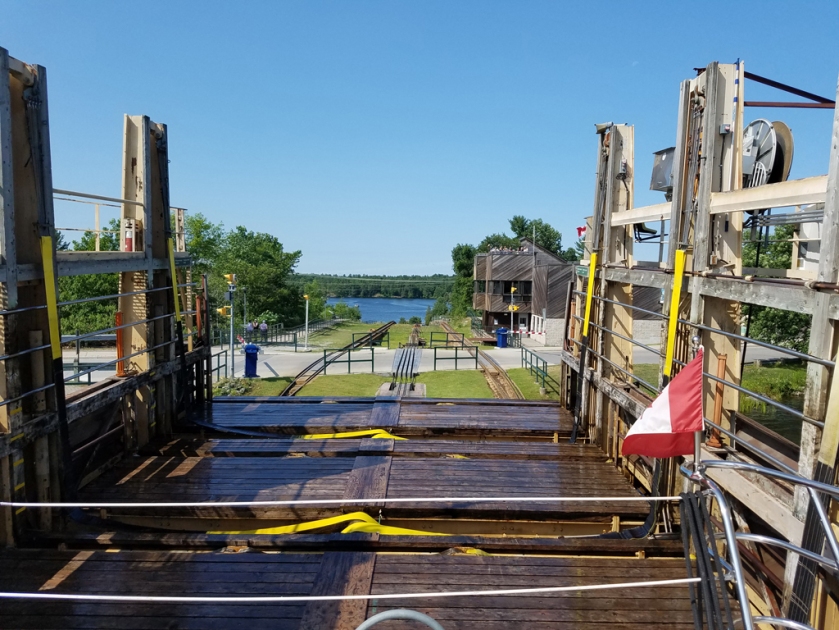
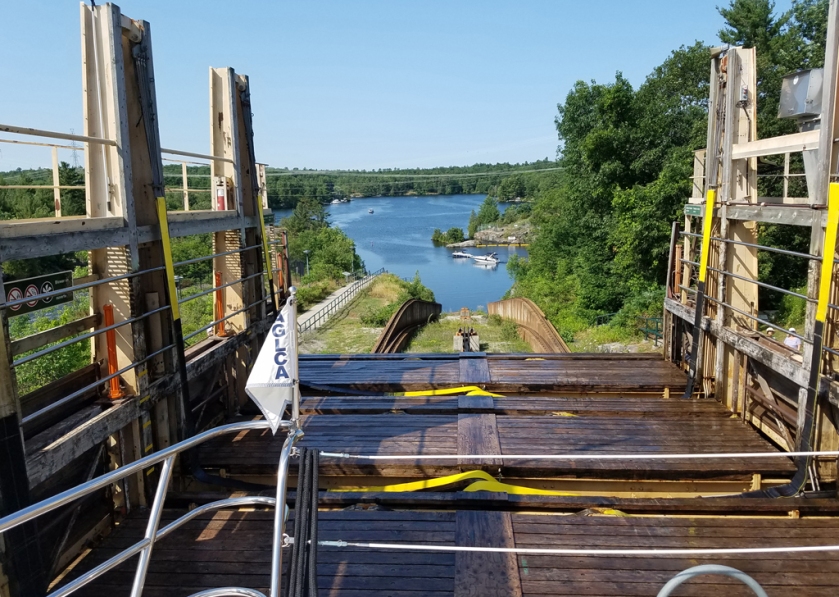
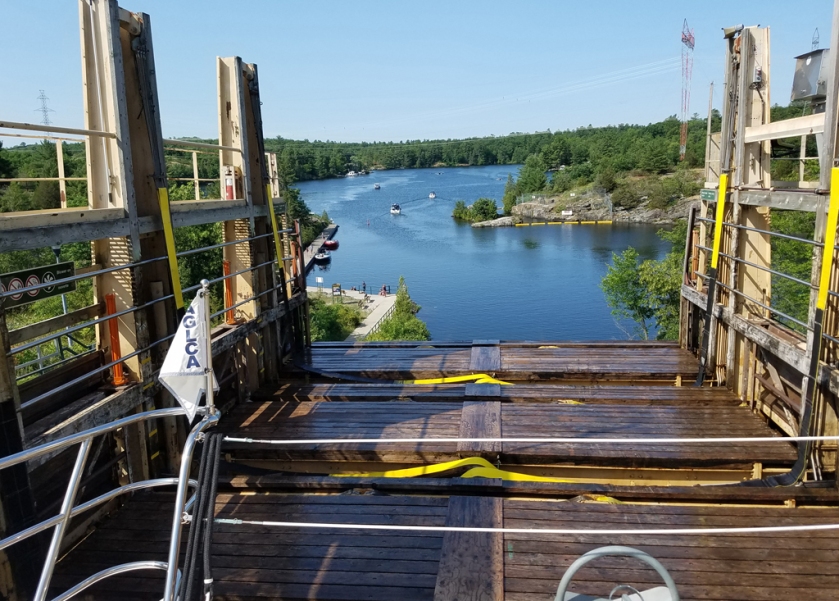

A short ride and transit through two more locks and several extremely narrow channels brought us into Georgian Bay, with a quick trip across in very calm seas to Victoria Harbour. Here we enjoyed docktails on Nine Lives, followed by dinner at the nearby restaurant with Loopers on another catamaran. B-Side is a PDQ, a Canadian builder, unfortunately no longer in business. Their cats are both narrower and taller than ours, having a fly bridge. It is always interesting to look at other boats on the loop, and we have all enjoyed seeing the similarities and differences between the boats. Victoria Harbour also offers an excellent briefing for travel in Georgian Bay. Dick attended and took his charts along to allow for annotations. He said it was interesting, although with mostly the same information that had been presented at the session in Norfolk last year. Not surprising, the Canadian Shield, being rock, tends not to change the way the sands of the ICW move around to catch unwary boaters!
The next day took us to Penetanguishene. Last year we visited Midland, so we thought we would investigate the next bay over this time. Although quite a lot has been spent on new sidewalks, parks, cycle paths, and an array of hanging baskets, the village itself has little to offer visitors, with few restaurants and all the stores being more repair depots than actual shops. Dick rode his bike to the grocery store. Brenda and Bruce on B-Side had a much more positive experience of the area. They got tickets and went to the local live theatre production of Beauty and the Beast. They tell us it was a very professional production, with excellent singers, actors and sets. The town seems to attract a great many visitors, if the numbers of people walking around on the docks is anything to go by. On our way in we passed many beautiful homes on the waterfront, so it was a surprise that the village looked so run down in spite of the money spent on the town marina and infrastructure. So different from what we saw when we were in Quebec towns last year.
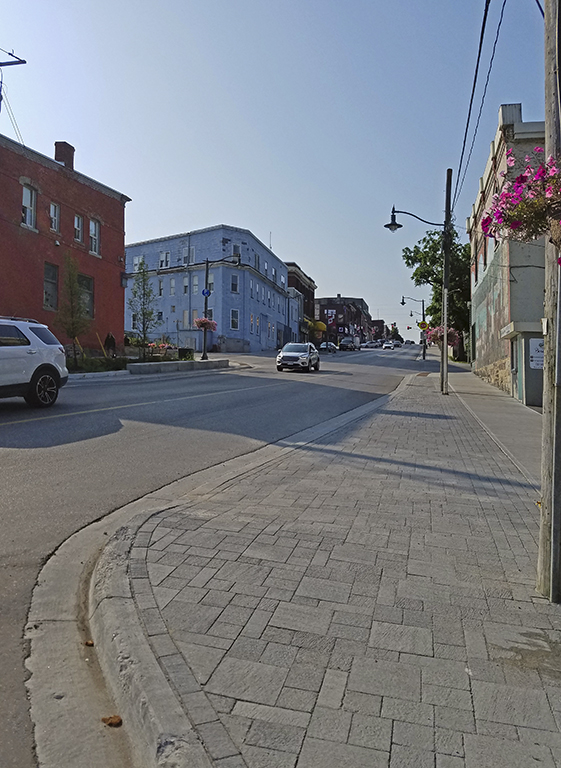
We enjoyed looking at H.M.S. Badger, a replica gunboat from the “golden age of sail”, the time of Nelson’s navy. Capable of being moved by both sail and oars, these gunboats would carry at least one and up to three cannon on board. Being small and manoeuvrable, they could operate in shallow or restricted areas, and could be used in stealth attacks on shoreline defences or larger ships. They were quick to build, and were often used in swarm tactics in a naval battle. H.M.S. Badger was lovingly built from a Great Lakes lifeboat over two years of research and now sails regularly in the Penetanguishene area. Badger went out one evening during our visit, but sadly I didn’t catch sight of them away from the dock.
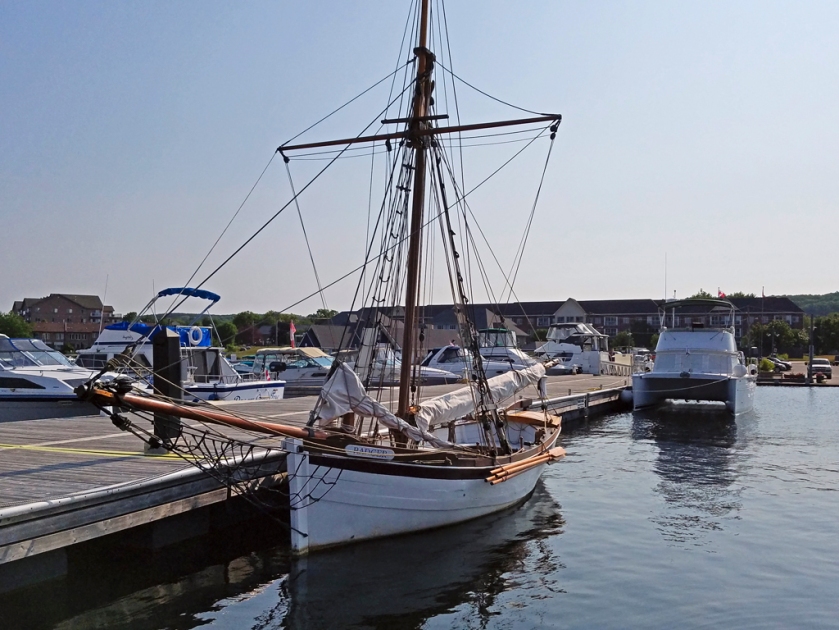
Dick spent the afternoon taking another run at diagnosing what might be wrong with the fridge. It is a mysterious problem, with the freezer section working perfectly while the fridge section just seems to get less and less cooling. The new part that Dick installed in Trenton (and removing some of the wooden slatting to allow more air circulation) made no difference. Dick again pulled the fridge out from its slot (no trivial task) and by means of alligator clips he was able to determine that the problem is not with the thermostat. A pity, because that would have been an easy fix, so we are almost certainly looking at replacing the fridge this coming winter. Strangely, the messing about does seem to have had some effect, because while the fridge is still not working acceptably, it is definitely about 10 degrees F cooler than it was, so once again useable for many items.
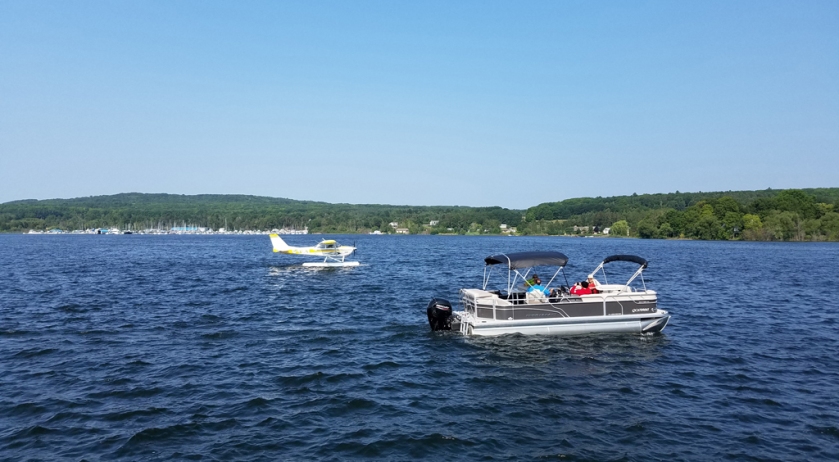
In a bit of scenic one-upmanship, this part of Georgian Bay is called the 30,000 islands (as compared to the 1000 islands of the St Lawrence). This is the largest freshwater archipelago in the world, stretching across the eastern part of Georgian Bay north to Parry Sound. The area boasts 8 Provincial Parks and a National Park, and is a mecca for boaters, campers, hikers, and cottagers. The area was much loved by the artists from the Group of Seven, and the distinctive windswept pines on rocky outcroppings are part of the stunning scenery. Legend tells of a god called Kitchikewana, known for his great temper. Disappointed when he was turned down by the woman he wished to marry, he grabbed a handful of soil and flung it into the Great Lakes, creating the 30,000 islands. The finger marks he left behind became the five bays. He then lay down to sleep, and is still there to this day as Giant’s Tomb Island. Probably just as well.
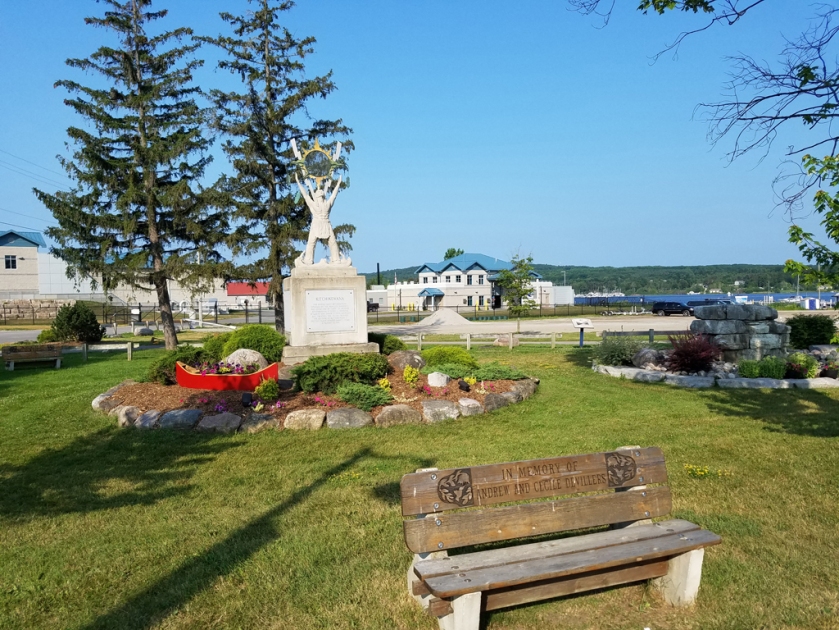
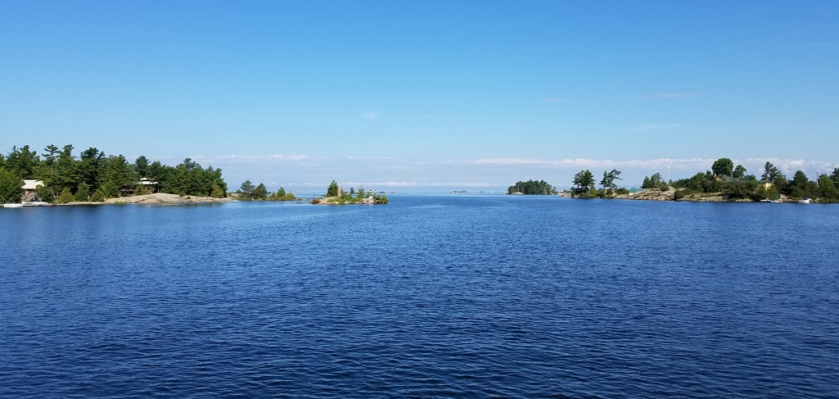
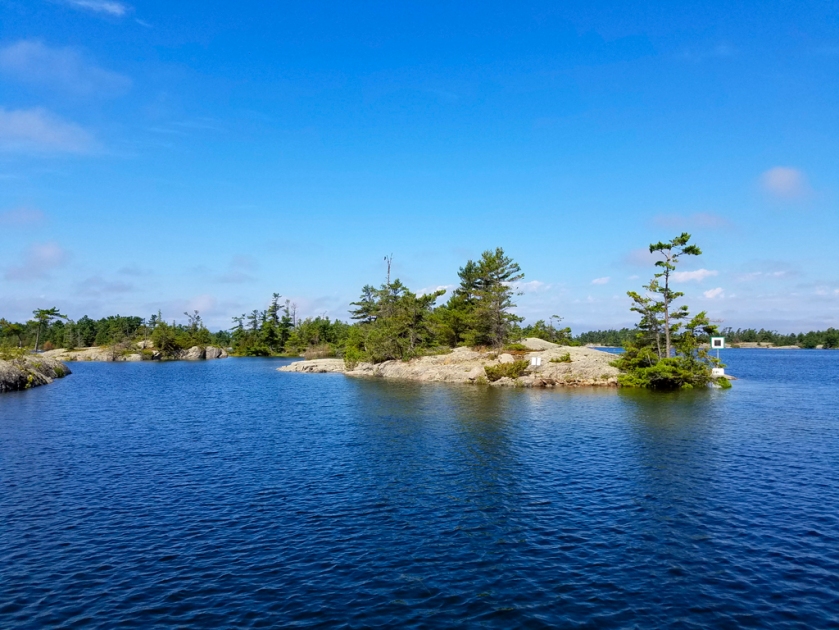
Our first destination was Honey Harbour, a long inlet with several quite narrow and shallow channels, made more challenging by speeding local boaters. We were amused to hear over the radio, “to the cruiser who just crossed my bow, are you new to boating?” We chuckled, and sympathized. South Cove Marina is almost exclusively large boats, and has a restaurant on site. It is very much a full service marina, with both tie up and cast off help from dock hands, hourly trash pickup from dockside, and even collection at your car and transport to the boat for your provisions and suitcases! It is also a very dog friendly marina, with lots and lots of tail-waggers to watch going to and from the boats. We were especially charmed by an 8 week old golden retriever pup on the boat behind us, reminding us very much of our long gone Sam. We enjoyed docktails with Brenda and Bruce on B-Side before heading to the restaurant for supper. They left Sunday morning, braving the weekenders, but we are looking forward to meeting them again, probably in Parry Sound.
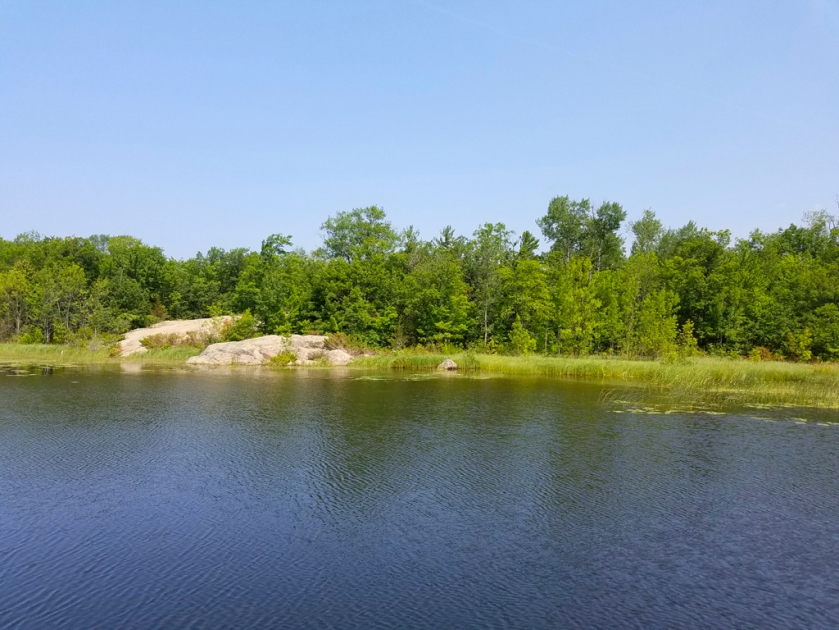
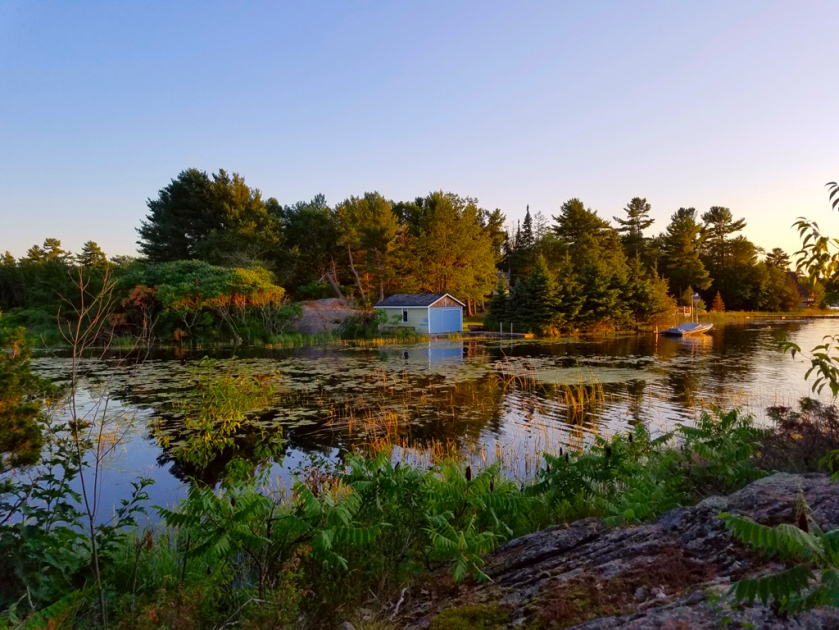

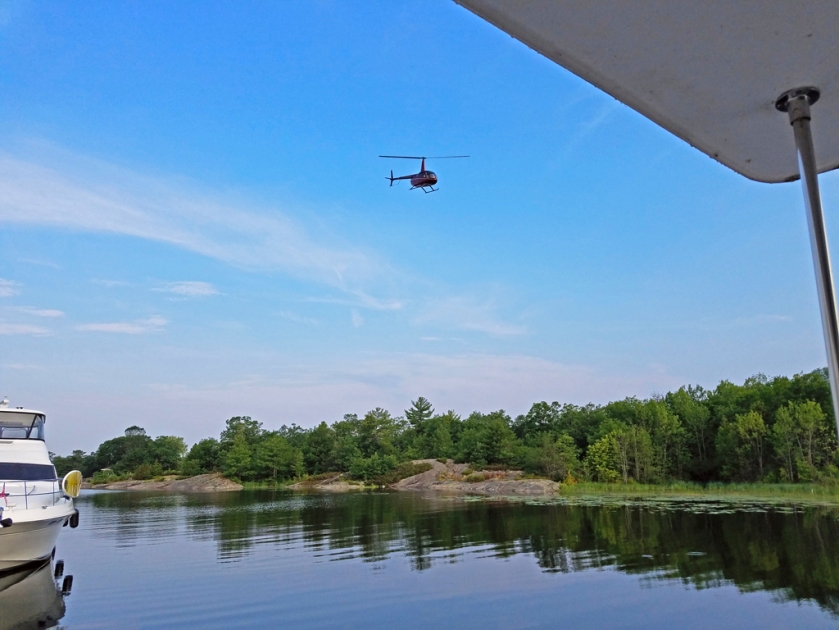
July 29 found us at anchor in Longuissa Bay, a long narrow inlet off Musquash Channel. Dick barely had time for a swim before his uncle Hans and aunt Cathy came chugging into the anchorage on their houseboat. We rafted up for the night, and enjoyed a convivial afternoon of swimming and naps for the old fogies (that would be everyone but me), followed by docktails and dinner on board Nine Lives. Major squall warnings were being broadcast almost continuously over the radio for part of the afternoon and during dinner. Even in our sheltered anchorage, Nine Lives swung continuously around the anchor and the trees on shore swayed and bent wildly in the winds. We were very pleased that the anchor held fast, even with the added weight and windage of the houseboat. 180 feet of chain certainly offers a lot of strength, even though there is some suggestion that a mix of chain and rope is the preferable rode.
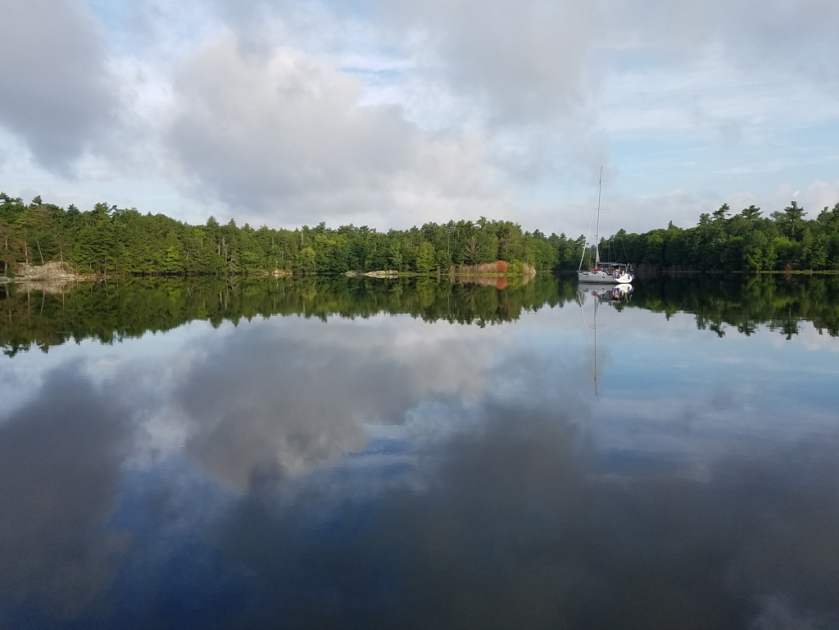
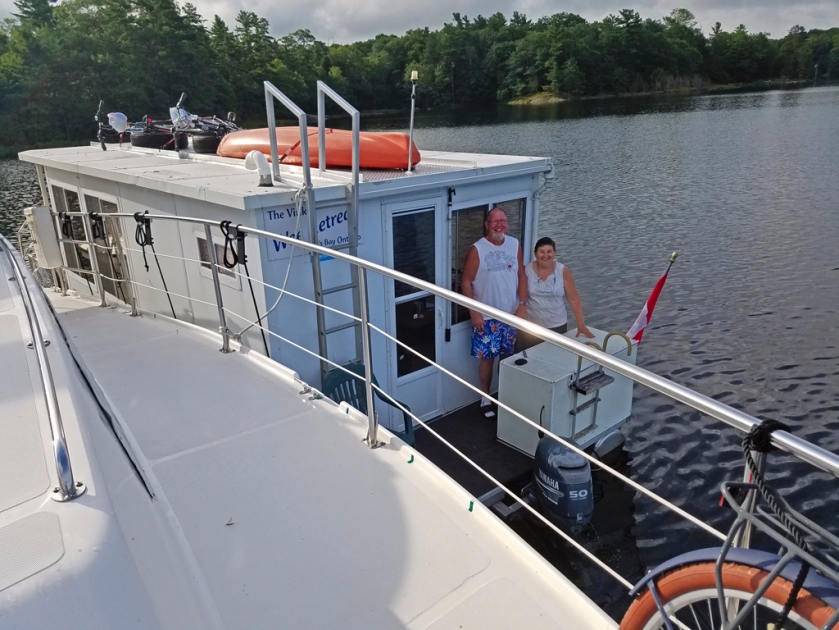
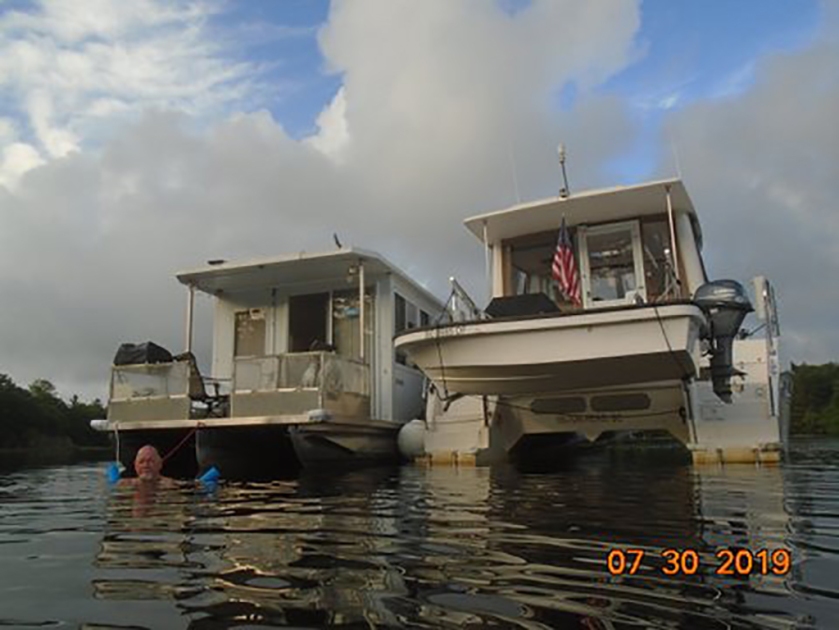
The next day we continued our slow meander north, stopping for the night in Indian Harbour. It was very pretty, especially at sunset, but surprisingly windy. Other boats had trouble setting their anchors, and I never entirely trusted that we were not dragging. I woke up many times in the night to check the anchor app on my phone to make sure we were still where we were supposed to be.
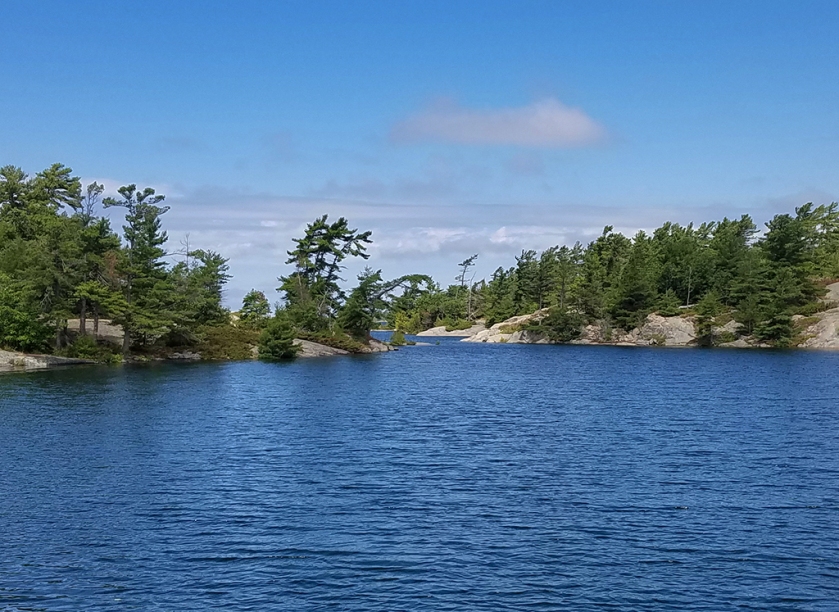
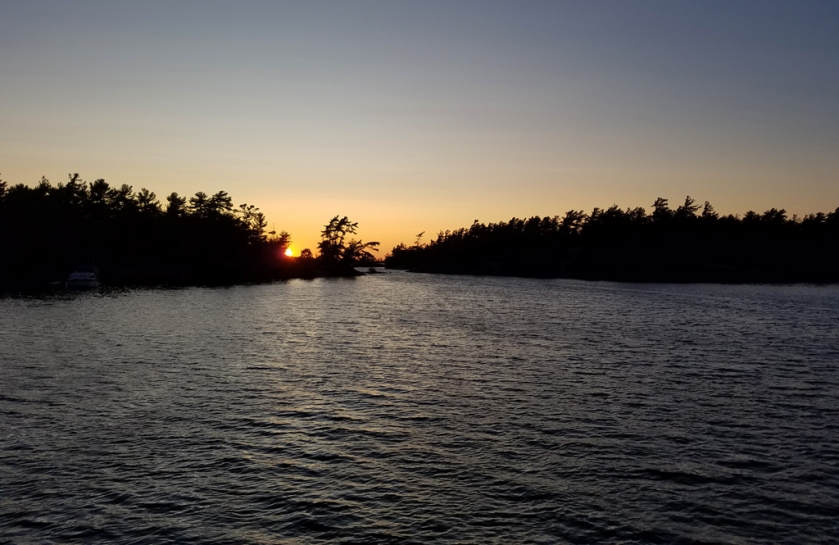
It was a short step to Wani Bay, off Twelve Mile Bay. The suggested anchorage near O’Donnell Point seemed both unprotected from the wind and full of a lot of rocks in overly deep water. We were joined in Wani Bay by 2 other Looper boats including Bella Gatto, an Endeavour 36. We all enjoyed docktails on the big foredeck on Nine Lives.
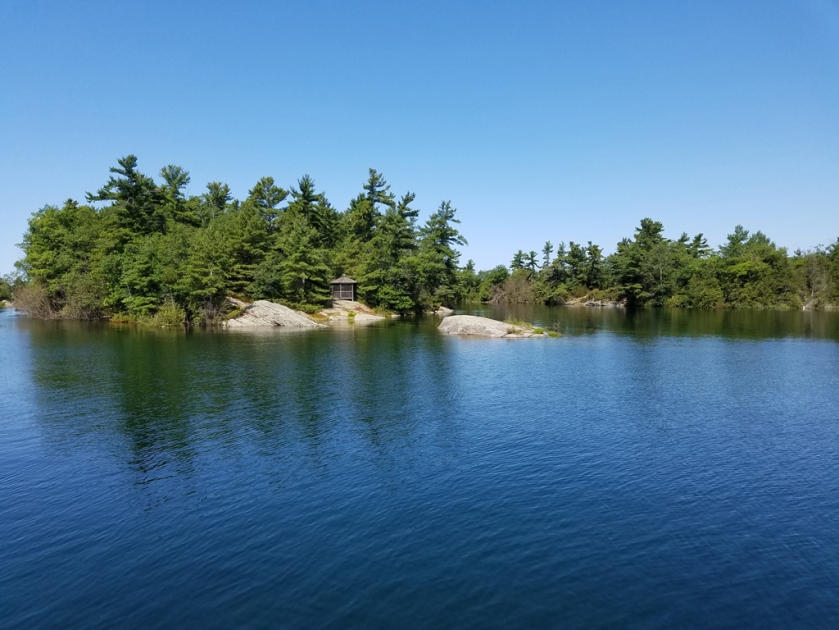
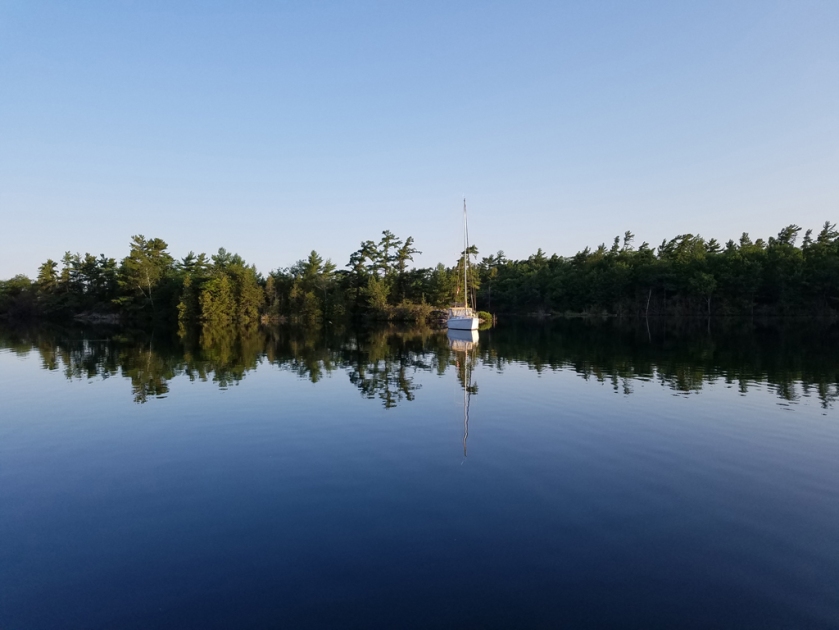
In the next couple of weeks, we will continue making our way north through Georgian Bay and the North Channel towards Sault Ste Marie.


